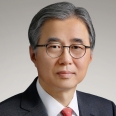Panel: National or Multilateral Security? (GB III)
– Talking Points: Paul Evans
– Talking Points: Teng Jianqun
Date/Time: Wednesday, April 23, 2014 / 10:30-11:45
Speakers:
Choi Kang, The Asan Institute for Policy Studies
Paul Evans, University of British Columbia
Ken Jimbo, Keio University
Scott Synder, Council on Foreign Affairs
Tong Jianqun, China Institute for International Studies
Gilles Vander Ghinst, North Atlantic Treaty Organisation
Session Description
The structure and purpose of security arrangements have changed significantly since the Second World War. From the US-led “hub-and-spokes” system in Northeast Asia to the more informal relations pursued by China in Southeast Asia, regional security mechanisms have varied in structure and membership. As countries in East Asia seek to build new forms of multilateral or mini-lateral security, the perspectives of major powers as facilitators or inhibitors of cooperation become essential. The experience of different cooperative security arrangements such as the North Atlantic Treaty Organization and Association of Southeast Asian Nations begs the question of whether similar mechanisms are possible in East Asia. Furthermore, if such mechanisms are viable, what forms of multilateral security are likely to emerge?
Session Sketch
Rapporteur: Dylan Stent, Yonsei University
Dr. Choi Kang of the Asan Institute for Policy Studies began proceedings by asking one overarching question: what security architecture do we want in East Asia? Many alternatives have been proposed including the 1994 North East Asian Security Dialogue, and more recently the Northeast Asia Peace Cooperation Initiative proposed by the current Park Guen-hye regime. Can these help multilateral help integration in the region?
Professor Paul Evans from the University of British Columbia proposed that “cooperative security 2.0” could develop. Cooperative security 1.0 emphasized a “multiplex security” order that combined unilateral procurement, bilateral arrangements and multilateral arrangements. Cooperative security 2.0 will develop within structural changes that are occurring in Asia, namely the rise of China. There are four possibilities for how this may develop: keeping a hegemonic structure with either the US or China as the hegemon; the creation of a concert of great powers; a new security community where war is perceived as inconceivable; and an associational security order based on reassurance and self-restraint.
Professor Ken Jimbo of Keio University suggested regional integration has been diversifying in three ways: the primary source of hegemony; the proliferation of intra-spokes lead by internal cooperation; and the growth of triangular mechanisms including the Japan-South Korea-Australia trilateral arrangement. These trends are creating three layers of security architecture. The first layer consists of networks of alliances. The second layer refers to function and task orientated tasks including intelligence sharing, and shared military exercises. The third layer is the multilateral security framework.
Mr. Scott Synder of the Council on Foreign Affairs explored five challenges the region faces: the existence of national identity gaps; the idea of order in Asia; growing security dilemmas; overhang from the Cold War; gap in understanding of the US’s presence in Asia. Mr. Synder suggested that once we go beyond the structure and look at identity then we can hopefully come up with solutions. Dr. Choi corroborated this suggesting that a mental foundation of security can help us understand national and regional identity.
Dr. Tong Jianqun explored unilateral, bilateral, and multilateral ideas. Unilateral Chinese security has been split into three stages: the ideological aligned era; the trade and opening up era; and a new stage under Xi. Bilateralism was explained through the prism of Sino-US relations. The two powers had a recent summit meeting to agree on a new relationship. However, some in Washington have criticized this concept suggesting “it is a trick” to make the US give up its sphere of influence in Asia. Recently, interactions between the two have increased including the upcoming Rim Pac naval exercise. The underdeveloped multilateral field was explained by the Six Party Talks.
Mr. Gilles Vander Ghinst of NATO proposed states need to craft common policy that will pay dividends in the future. NATO no longer concentrates on traditional security fields and has morphed into battling crisis management and corporate security. To do this NATO constantly redefines itself. An example of this has been the inclusion of non-member states into various processes. Thus, cooperation needs to be inclusive. Flexibility and openness in membership is needed in Asia.

 Facebook
Facebook Twitter
Twitter














